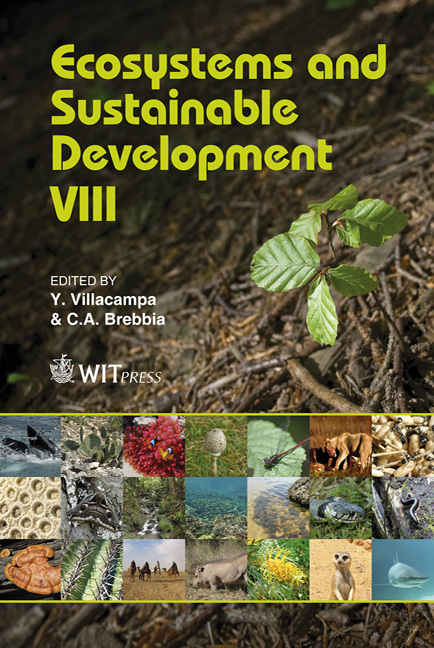Top-bioclimate Conditions Associated With The Natural Occurrence Of Two Amazonian Tree Species For Sustainable Reforestation In The State Of Para, Brazil
Price
Free (open access)
Transaction
Volume
144
Pages
12
Page Range
111 - 122
Published
2011
Size
3,563 kb
Paper DOI
10.2495/ECO110101
Copyright
WIT Press
Author(s)
L. G. Martorano, D. C. A. Monteiro, S. Brienza Jr., L. S. Lisboa, J. M. do Espírito Santo & R. F. Almeida
Abstract
The plants’ answer to the top-bioclimate conditions is important for mapping occurrences and indications of preferential areas for the development of the forest species. This study aimed to georeference the natural occurrence of Taxibranco (Sclerolobium paniculatum Vogel) and Parica (Schizolobium parahyba var. amazonicum (Huber ex Ducke) Barneby) integrated with top-bioclimate information to indicate plantations for rehabilitation of degraded landscape. The data regarding natural occurrence of species was investigated in the literature, the herbaria of Embrapa Eastern Amazon and the Paraense Emilio Goeldi Museum and demonstrative units in the Eastern Amazon. Normal climates from thirty year series with spatial resolution 3 km x 3 km were specialized in Arcgis 9.3 and exported to TerraView 3.2, to create the cellular space for integration of variables in TerraME and to generate top-climate maps and species’ natural occurrence. As the Taxi-branco occurs in upland and lowland it was observed that the species prefers areas of predominantly top bioclimate with water deficit between 150 to 250 mm, and elevations below 200 m altitude, next to the river, and the Parica in about 300 m altitude, and water deficit below 180 mm. The knowledge of these zones should enhance the degree of confidence on the areas
Keywords
preferential areas, top-bioclimate zoning, degraded landscape





